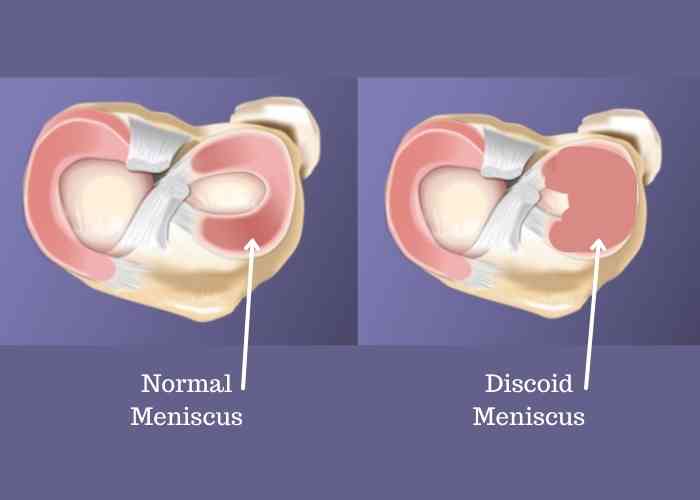- Home
- Discoid Meniscus
Discoid Meniscus
Discoid Meniscus Injury
The meniscus is a wedge-shaped piece of cartilage that sits in between the bones of the knee and acts as a cushion to protect the bones during movement. Each knee has two menisci. Healthy menisci are shaped like crescent moons (in fact, “meniscus” comes from the Greek word for crescent). A discoid meniscus is thicker than normal, and often oval or disc-shaped. It is more prone to injury than a normally shaped meniscus. People with discoid meniscus may go through their entire lives and never experience any problems. If a discoid meniscus does not cause pain or discomfort, no treatment is needed. Some people, however, will have knee problems related to the discoid meniscus. Symptoms often begin during childhood.

Anatomy
The menicus acts as a “shock absorber” between your femur (thighbone) and tibia (shinbone). It protects the thin articular cartilage that covers the ends of the bones and helps the knee to easily bend and straighten.
There are two menisci in the knee: the medial meniscus on the inside of the knee, and the lateral meniscus on the outside. The menisci are attached to the femur bone by a strong tissue called the meniscofemoral ligament. This ligament also provides a blood supply to a small portion of the meniscus.
Description
In many cases, a discoid meniscus is shaped like a half moon or complete circle, rather than a crescent moon. It most often occurs on the lateral side (outside) of the knee, and can sometimes be found in both knees.
BOOK AN APPOINTMENT
“KNEEO Technique” For Knee Replacements
Types of Discoid Meniscus
There are three types of discoid menisci:
- Incomplete. The meniscus is slightly thicker and wider than normal.
- Complete. The meniscus completely covers the tibia.
- Hypermobile Wrisberg. This occurs when the ligaments that attach the meniscus to the femur and tibia are absent. Without these ligaments, even a fairly normally shaped meniscus can sometimes slip into the joint and cause pain, as well as locking and popping of the knee.
Discoid Meniscus Injuries
A discoid meniscus is more prone to injury than a normal meniscus. The thick, abnormal shape of a discoid meniscus makes it more likely to get stuck in the knee or tear. If the meniscofemoral ligament attachment to the femur is also missing, the risk for injury is even greater.
Once injured, even a normal meniscus is difficult to heal. This is because the meniscus lacks a strong blood supply and the nutrients that are essential to healing cannot reach the injured tissues.
In many cases of discoid meniscus, patients experience symptoms without there being any injury to the meniscus.
Cause
The cause of discoid meniscus is not known. It is a congenital (present at birth) defect.
Injuries to the discoid meniscus often occur with twisting motions to the knee, such as during sports that require pivoting or fast changes in direction.
Symptoms
The most common symptoms of a discoid meniscus or torn discoid meniscus are:
- Pain
- Stiffness or swelling
- Catching, popping, locking of the knee
- Feeling that the knee is “giving way”
- Inability to fully extend (straighten) the knee



